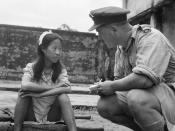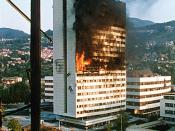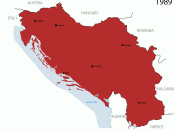In 1992 media stories began circling about the mass rapes in Yugoslavia, swiftly followed by public outcry and the beginnings of what was to become vast academic and journalistic interest in rape as a weapon of war. 20,000 is the conservative estimate of the number of raped women during the Yugoslav wars, with reports of gang rapes, public rapes, enforced brothels, ritualistic torture, rape camps and forced impregnation. The focus was on Muslim and Croat women raped by Serbian men. Yet mass rapes in times of war and crisis were not a new phenomenon. In 1937, in Nanking, an estimated 20,000 women were raped, sexually tortured and murdered during the first month of occupation. In Korea during World War II between 100,000 and 200,000 'comfort women' were abducted to rape camps and raped or sexually tortured.
Whether it was because of a rise in feminist theories on security or the European identity of the victims and perpetrators, the mass rapes in Yugoslavia attracted a lot of attention and focus on understanding why these rapes occurred.
It swiftly became noticed through journalistic investigation and NGO reports that the rapes were often systematic and ordered in nature, implying that there was a reason behind these rapes.
It has been far too easy in the past to consign rape to a national matter whereby in realist terms individual rape is a matter for the state. The implications behind the competing explanations for the mass rapes were far reaching, with important bearings on competing conceptions of security, whether it should be seen as individual or collective security, national or open to gender based insecurity. This has further implications on how mass rape during war should be dealt with, is it a matter for individuals, the nation or international intervention? And if it is...


